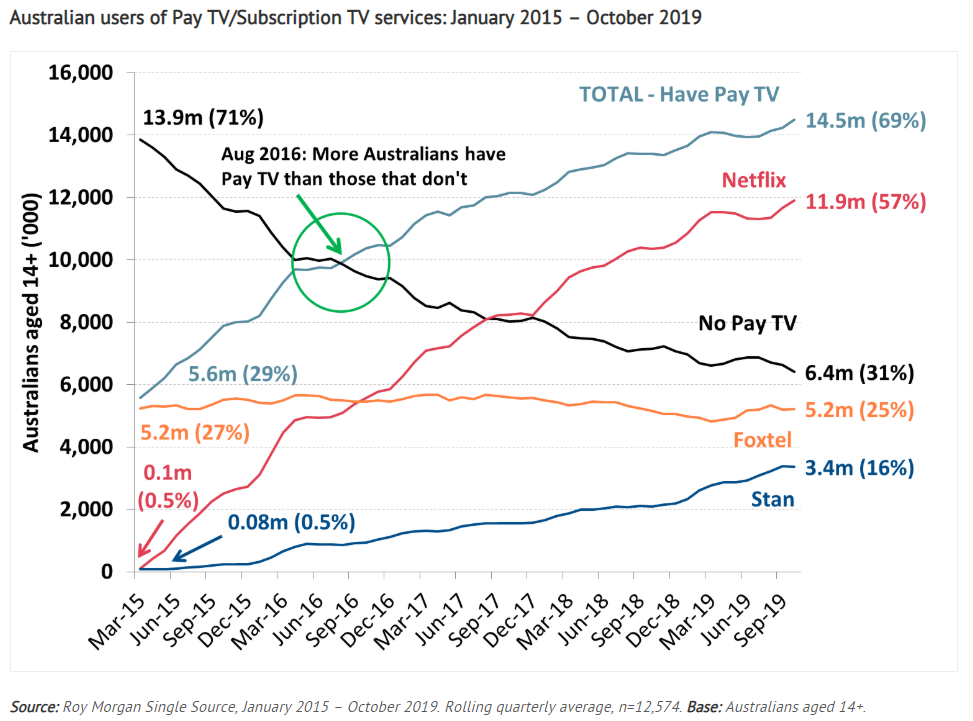It has become apparent for some time that Foxtel is fast losing its grip on the subscription television market.
After holding a near monopoly on cable Pay-TV for twenty years, Foxtel has lost significant market share to video-on-demand (VOD) services like Netflix and Stan, which have experienced explosive growth since launching in Australian in early 2015:

This VOD market is also rapidly expanding, with new players like Disney and Apple TV recently joining incumbents Netflix, Stan, Amazon, Optus Sports, and Hayu. Major US players, HBO MAX and The Peacock (NBC), are also soon expected to launch in Australia.
The launch of HBO MAX is particularly problematic for Foxtel, which currently holds the exclusive rights to HBO content in Australia. Losing HBO content would deal another heavy blow to Foxtel, and follows in the wake of it losing soccer and rugby broadcasting rights to Optus Sports.
To make matters worse, Foxtel also faces the prospect of losing its exclusive Discovery Channel content to Nine, which is planning to launch a new documentary-centred digital channel:
‘Rush’ could draw on content from Discovery’s channels like Animal Planet, the Science Channel and the Discovery Channel…
It’s likely to be a digital channel, but they’ve also secured trademarks to broadcasting and podcasts…
At present, Foxtel has the rights to Animal Planet, the Discovery Channel and more.
These could be wiped from its exclusive arsenal and potentially brought to the realms of free-to-air TV, screen media lecturer Marc C-Scott told TND.
The same article claims that the BBC-ITV partnership BritBox will launch in Australia later this year, thus muscling in on Foxtel’s BBC channel content.
The cold hard truth is that competition for eyeballs has never been greater in Australia, and Foxtel is likely to be the biggest loser in the ongoing subscription and streaming war:
Australian viewing audiences are reaching the point of programming overload.
There’s more than 35 free-to-air channels – each broadcaster has a main channel, then anywhere between two and five offshoots.
You can watch these live, or stream them on catch-up at your leisure.
If it’s video-on-demand you’re after, you’ve got Netflix, Stan, Amazon Prime, Disney Plus, Foxtel Now, Apple+, Kayo Sports and plenty more niche players popping up weekly.
“There’s only so much TV we can watch,” said [screen media lecturer Marc C-Scott].
Even if Foxtel can miraculously hold onto its subscriber numbers, it will face falling average revenue per user. This is because its traditional high margin cable business is bleeding subscribers as consumers ‘cut the cord’ and shift to cheaper video-on-demand (VOD) services, including Foxtel Now and Kayo Sports.
As such, Foxtel’s financial future is looking bleak as consumers’ viewing preferences change and competition from VOD streaming services intensifies, stealing exclusive content, subscribers and market share.

